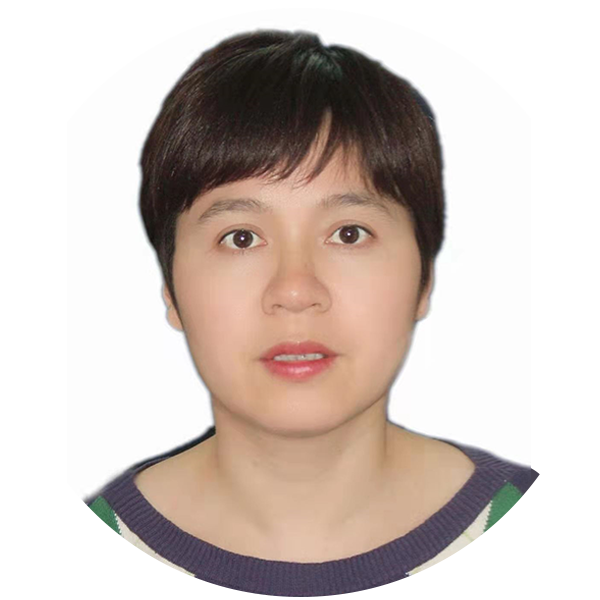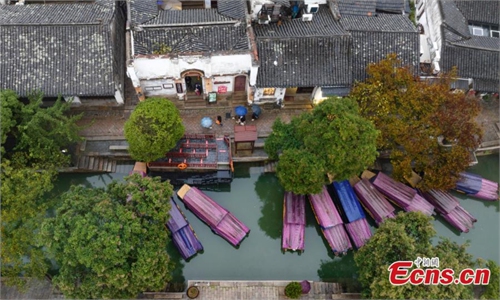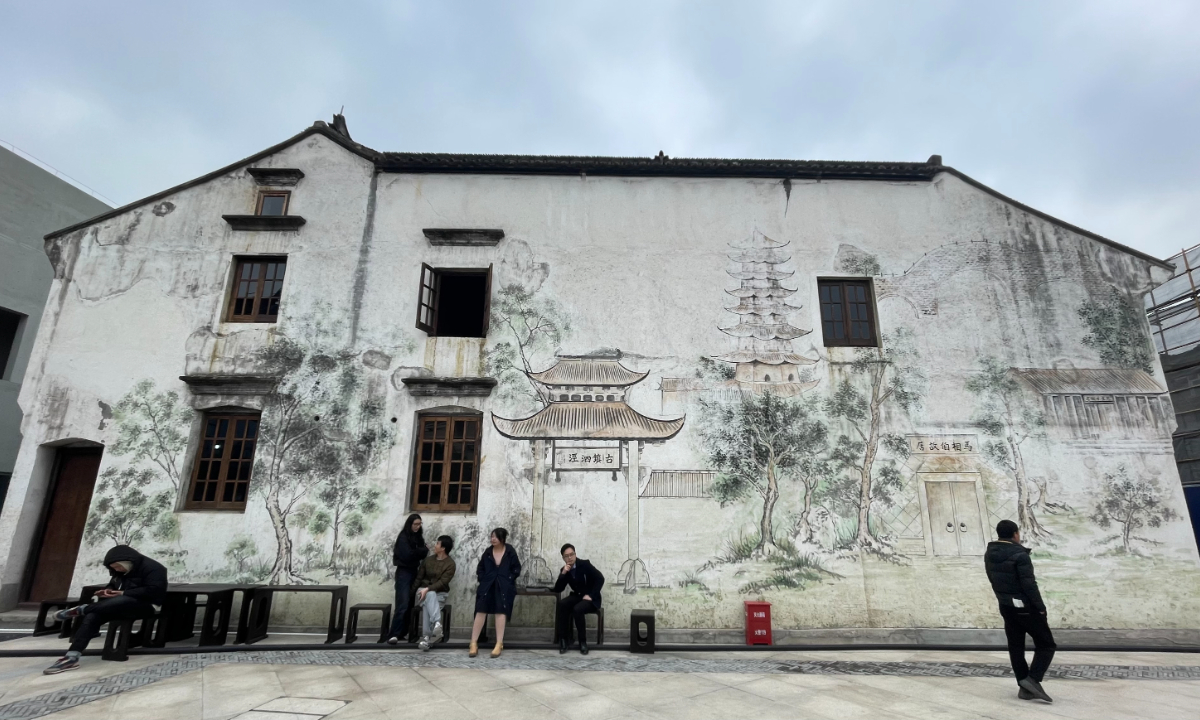
Visitors take a rest in front of a wall with illustration of the classical landscapes of Sijing Ancient Town in Sijing, Shanghai, on March 18, 2023. Photo: Feng Yu/GT
Sijing Ancient Town in Shanghai's suburban Songjiang district greeted its first group of visitors on March 17, after years of protective development and renovation, promoting itself as a culture-themed venue and being different from most other stereotyped ancient towns in the Yangtze River Delta region.
Home to the former residences of Tao Zongyi, a great Confucian of the Yuan Dynasty (1279-1368) who compiled the Records of Discontinuing Farming in Nancun, Ma Xiangbo (1840-1939), founder of Fudan University, and Shi Liangcai, a newspaper tycoon in the Republic of China (1912-1949) era, Sijing was named among six famous historical and cultural towns and villages in China in 2014.
The projects introduced in Sijing focus more on culture, as the town strived to maintain and cultivate nine water town landscapes of "water, street, alley, tower, temple, corridor, bridge, courtyard and workshop" based on its natural landscape and existing culturally protected buildings, according to the town management center.
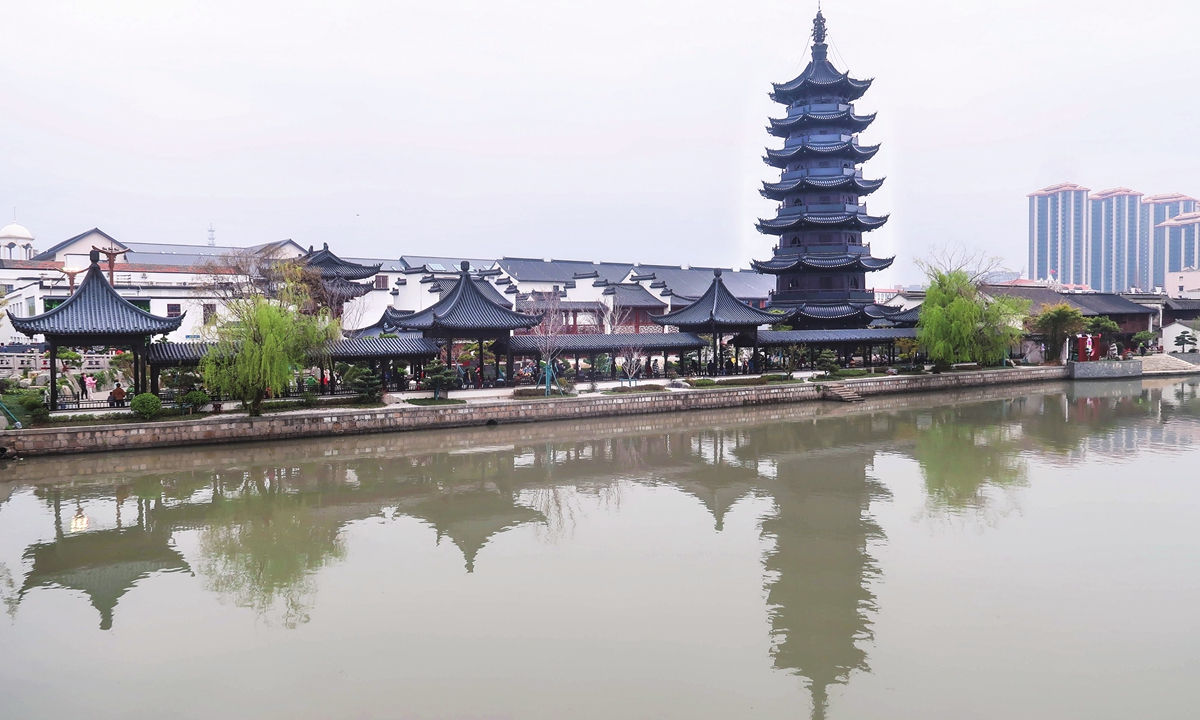
Overall view of Sijing Ancient Town Photo: VCG
At present, the houses along the street that have opened to public have been renovated, realizing the practice of "the overall restoration of the old as the old, and the details of the old made new," with the traditional style preserved as much as possible while new technology and skills are applied to present the details.
Among the 39 cultural relics in the Xiatang area in Sijing, the repair and decoration of 15 cultural relics including the former residences of Shi Liangcai and Ma Xiangbo have been completed, and the survey and design of another 17 cultural relics have also been launched. It is estimated that by 2025, the restoration of cultural relics in Xiatang will be basically completed, according to local officials.
The Global Times reporter found long lines of visitors on Saturday in front of the former residence of famous Chinese Catholic patriot Ma Xiangbo. As a witness of the 100-year suffering of China and Chinese people, Ma is famous for his sentence "I'm a dog, a dog that has been barking for a hundred years and it hasn't woken up the people of China."
Learning Ma's legacy as a great educator and patriot and Chinese history through Ma's life experience with the exhibits and archives displayed, visitors of all ages from across China can also appreciate the unique architectural features of the building.
Built in the late Ming (1368-1644) and early Qing (1644-1911) dynasties, the old house sits north and faces south. A passage in the east of the house runs through the front and rear halls. The beam frame in the front hall shows obvious characteristics of the times, which is important for the study of Sijing residential buildings in Ming and Qing dynasties.
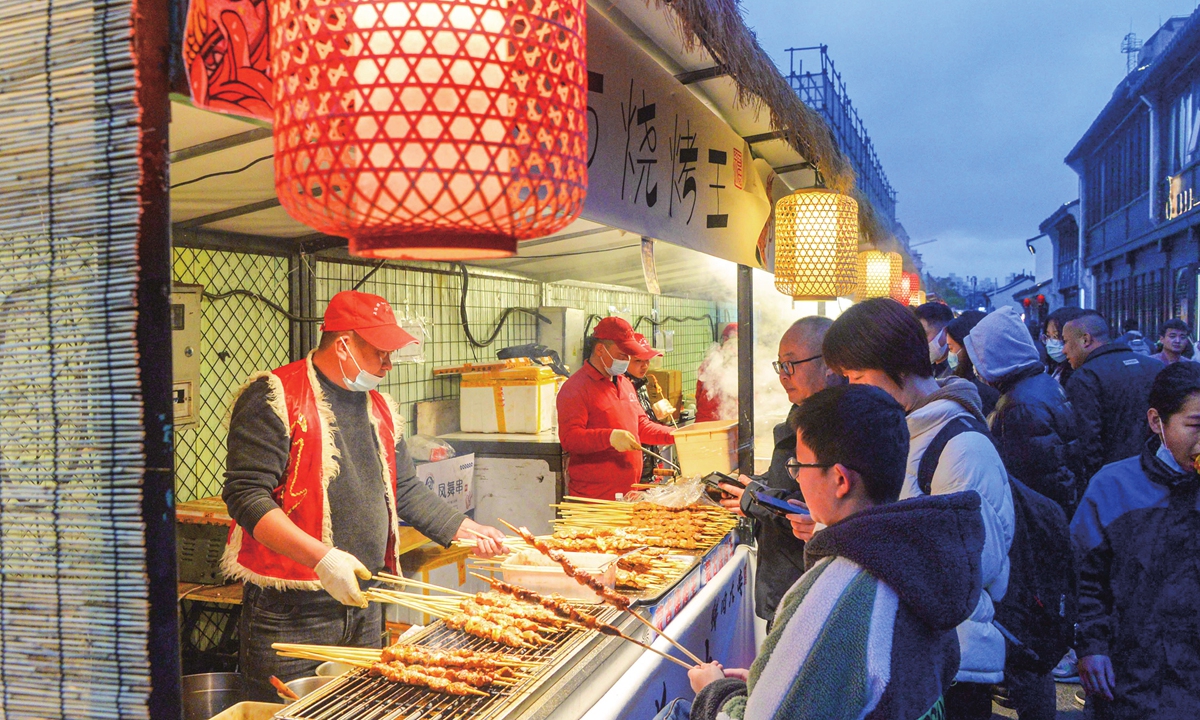
Tourists in front of a food market inside Sijing Ancient Town Photo: VCG
Poetic beauty
Besides the buildings, the introduced and settled projects in the town are also culture-oriented and represent the elegant style of ancient literati, while tourists can immerse in and interact with the settled artists or performers.
Catering to younger visitors, the town management is promoting the slogan: "Come to Sijing Ancient Town to experience the poetic beauty of 'wind, flowers, snow, and moon,'" referring to the four recommended places.
Wind is the Guqin Culture and Art Museum of "Songfeng Tingyin" featuring Wumen Guqin school settled in Jiang's house, which has been completely renovated. Guqin is a traditional Chinese musical instrument. "Songfeng Tingyin" mainly focuses on Guqin culture and teaching, inheriting and developing Guqin culture.
Located in Guan's house, "Nancun Yingxue" is considered as one of the most beautiful bookstores in Songjiang district.
Relying on the original old house, the bookstore is restored with mossy stone steps, wooden bookshelves, carved doors and windows, green bamboo and lucid water. Talking about the origins of the building's name, "'Nancun' is the 'Nancun Thatched Cottage' where Tao Zongyi, writer in the Yuan Dynasty lived in Sijing, and 'Yingxue' is taken from the 'Yingxue Zhai' built by book collector Sun Daoming," the store's manager explained.
Hua, or flower, is a reading art space for the comics "Waiting for a Flower to Bloom" settled in Ding's house.
Yue, or moon, is the space "Yueqi Huaming" located in Cheng's residence, which is a tea culture research center.
The Global Times reporter saw both young people and children with their parents have a good time in the venues while reading books or experiencing playing the Guqin and other activities.
Visitors are welcome to try traditional Sijing steamed bun and rice dumplings in the town among other popular franchised food and beverage stores.
The town is planning to introduce the intangible cultural heritage: "Songjiang Shadow Puppetry," Sijing's characteristic folk activities of Nancun Lecture Hall, Ancient Town Stage and daily Pingtan performances, to enrich the cultural experience of tourists. Visitors can go to Sijing Ancient Town via Shanghai Metro Line No.9 and admission is free.
